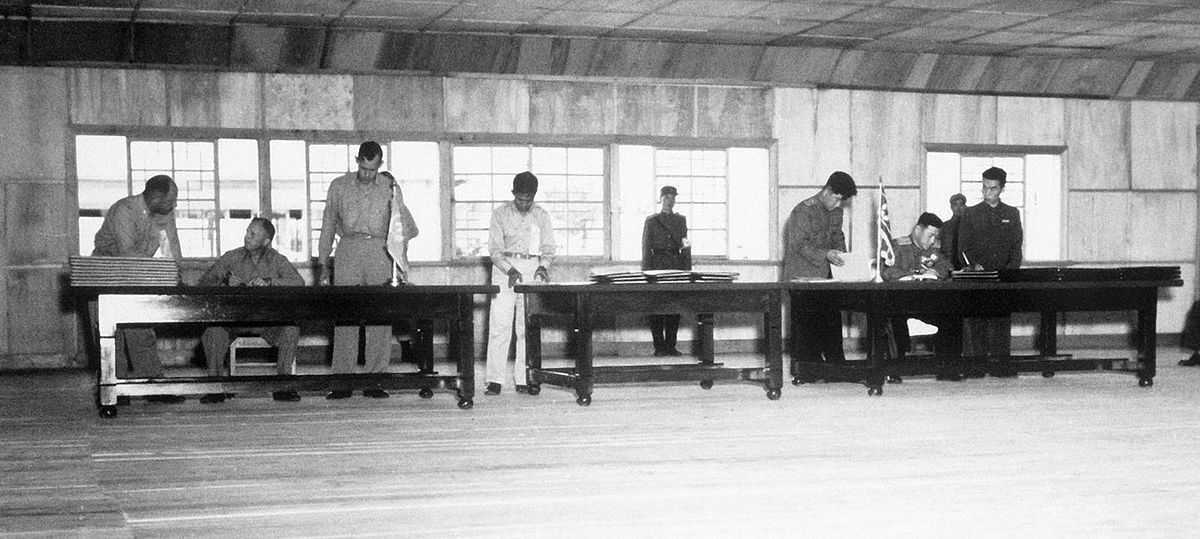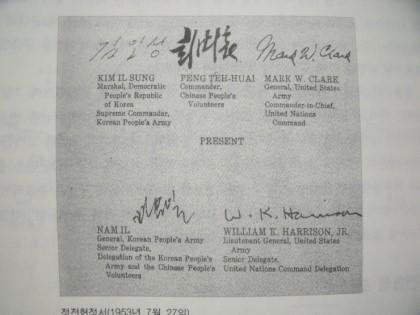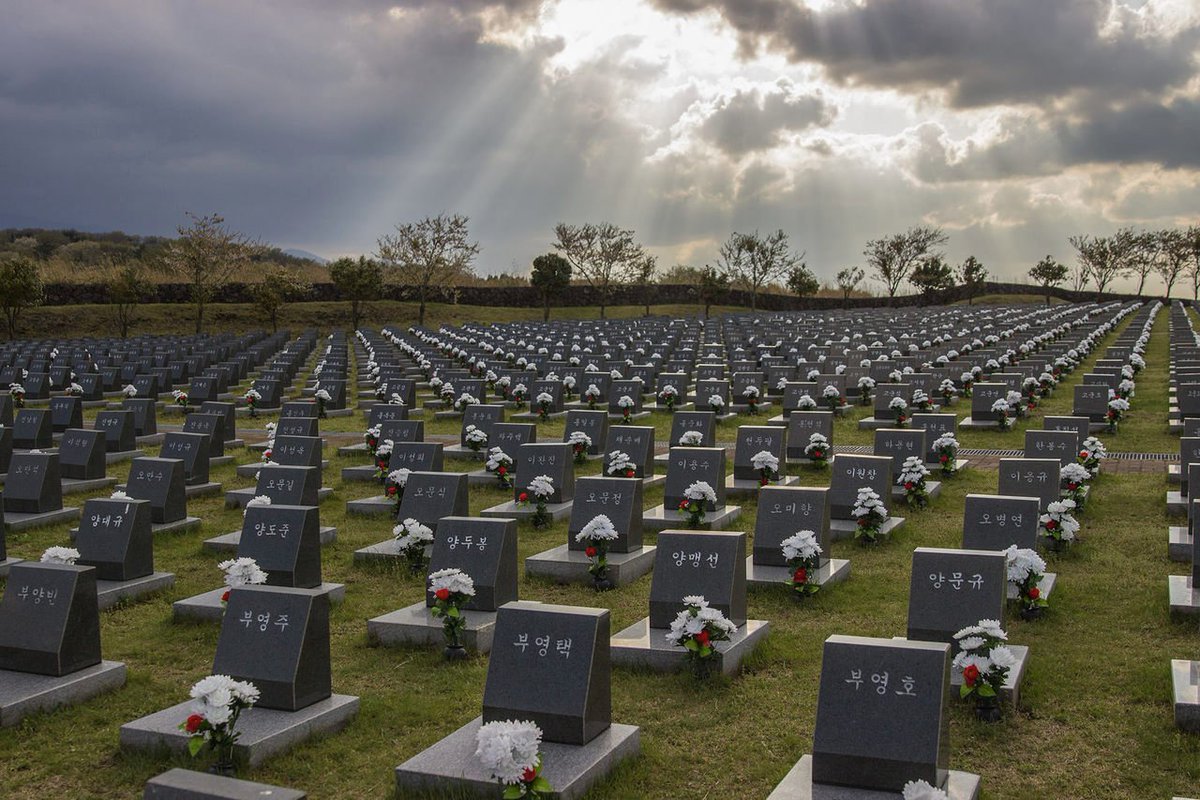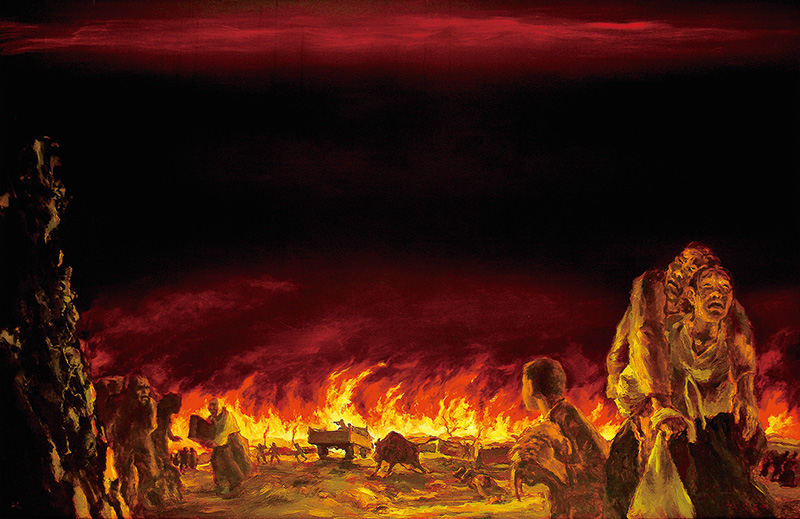
#OTD Oct 19th marks 72 years since the 1948 Yeosu-Suncheon Rebellion—a significant uprising in South Korea two years before the official start of the Korean War which resulted in the National Security Act, an anticommunist law that remains in effect to this day. 

The rebellion began after South Korean Labor Party soldiers in the ROK Army 14th regiment refused to deploy to Jeju Island, where a popular insurrection against the division of Korea was being brutally crushed by the newly established ROK govt under Rhee.
https://twitter.com/nodutdol/status/1246096226409472001?s=20
Refusing to participate in the slaughter on Jeju, 14th Regiment soldiers seized their arsenal and incited up to 2000 other soldiers to rebel.
They stormed the city of Yeosu, seizing the police station and city hall, and executed police officers and pro-Rhee figures.
They stormed the city of Yeosu, seizing the police station and city hall, and executed police officers and pro-Rhee figures.
The next day, the rebels of the 14th Regiment were joined by their comrades in the 2nd Company, stationed in nearby Suncheon County. The 4th Regiment was also absorbed into the rebel army after its commander was killed attempting to crush the rebellion.
On Oct 21, martial law was declared in the region. After 6 days, the rebellion was suppressed, and the rebel army fled to nearby mountains, where pockets of armed resistance continued for up to a decade. 

As in Jeju, the ROK Army’s retribution was indiscriminate. The 2009 Truth and Reconciliation Committee confirmed the killings of 439 civilians, and noted that up to 2,000 people’s whereabouts were never confirmed. 

The commission reported the use of torture against civilians suspected to have supported the rebels. It also noted the ROK field commander, “Illegally arrested and killed civilians based on his own interpretation of the law.” english.hani.co.kr/arti/english_e…
After suppressing the rebellion, the ROK Army rounded up civilians and subjected them to loyalty tests. Those deemed “traitors” were executed at Yeosu Central Elementary School. 

Reporting for LIFE Magazine, Carl Mydans noted, “We watched from the sidelines of a huge playground with the women and children of Sunchon [sic] while all of their men and boys were screened for loyalty. Four young men stripped to their shorts were on their knees begging.” 

“One had his hands up in a symbol of prayer. Suddenly these suppliant hands were crushed into his mouth and nose as a rifle butt smashed his teeth. Behind them stood men with clubs...who beat the kneeling group until the beaters, grinning, had to pause for breath.” 

The Yeosu-Suncheon Rebellion led to the National Security Act, which bans “anti-state” activities. Rhee used the NSA to conduct widespread anticommunist persecution—killing up to 15,000 suspected traitors in the areas surrounding Yeosu & Suncheon alone. kukmindaily.co.kr/article/view.a…
The National Security Act has been used to ban books, crush workers’ movements, restrict free speech, and jail dissidents. It remains in effect in South Korea to this day. Recently ousted President Park Geun-Hye famously used the law to jail her critics. nytimes.com/2016/03/06/wor…
• • •
Missing some Tweet in this thread? You can try to
force a refresh










